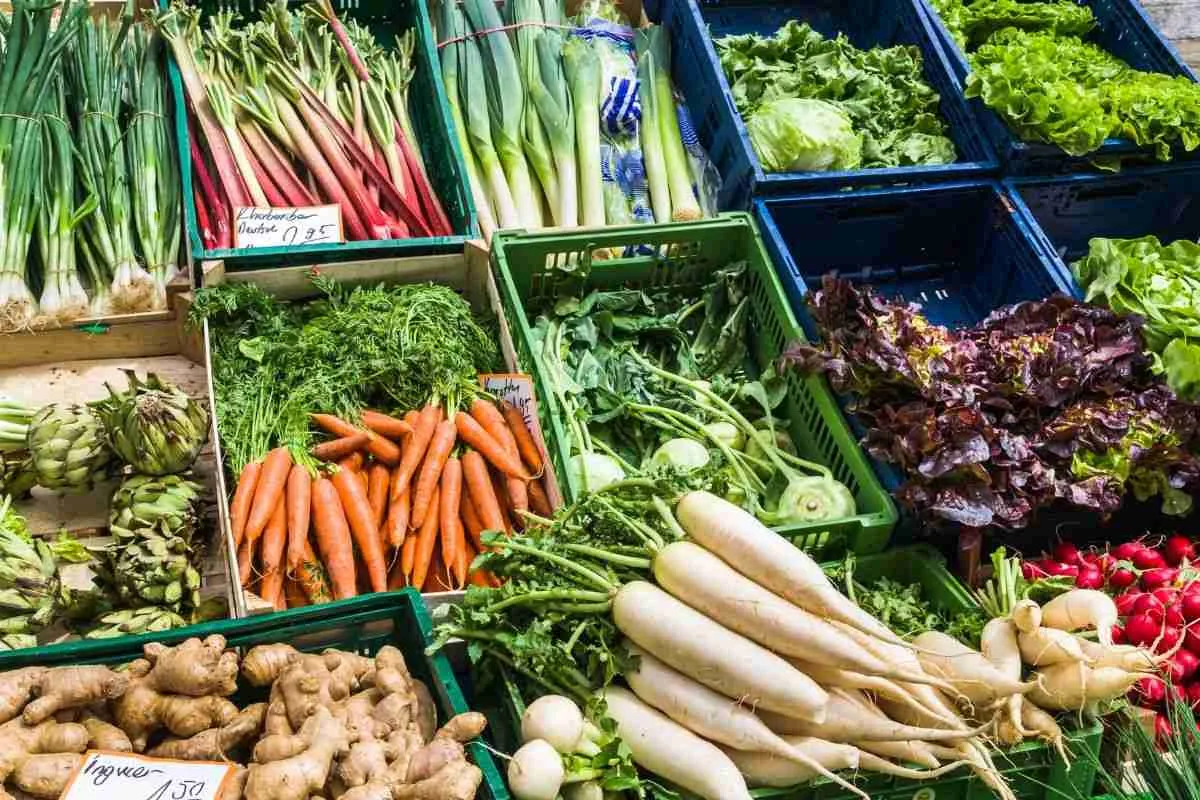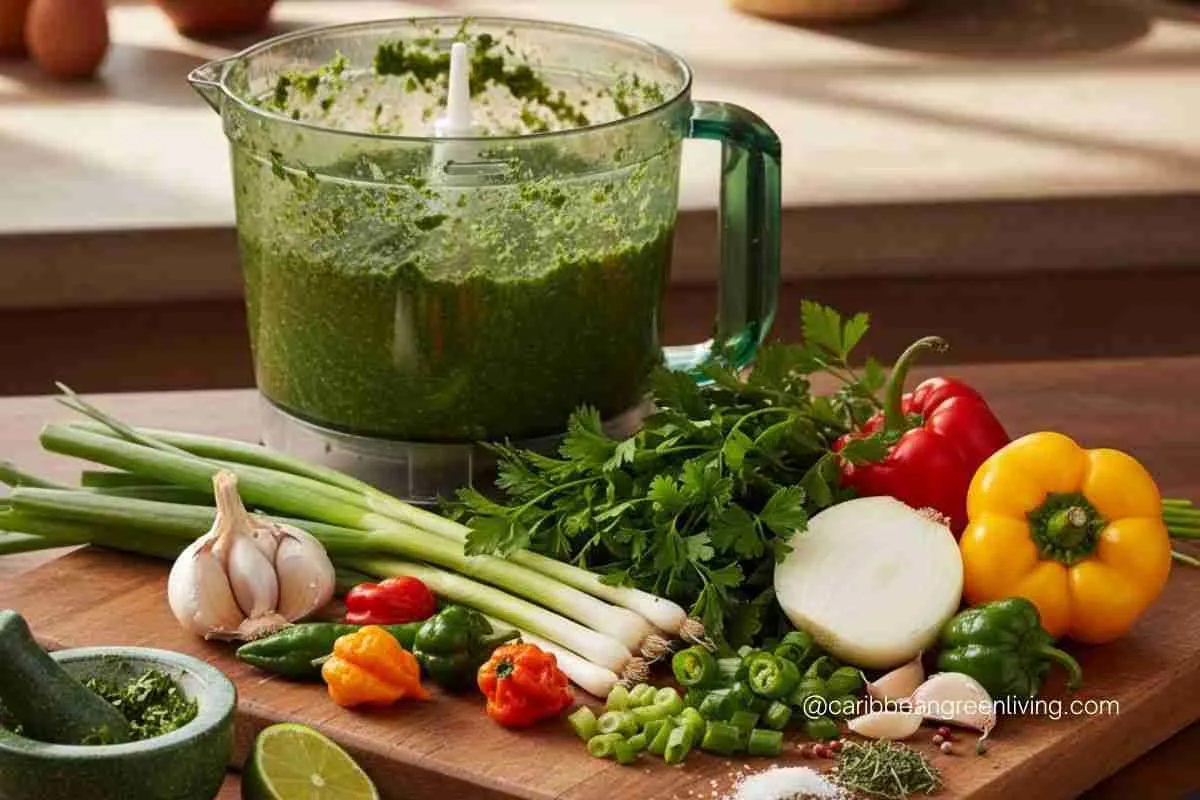Top 7 Caribbean Spices & How to Use Them
Caribbean spices are the not-so-secret secret behind that bold, soulful, “where-has-this-been-all-my-life” flavor you taste in every Caribbean dish. If you’ve ever taken a bite and wondered what makes it so unforgettable—spoiler alert—it’s all about the spices.
In every Caribbean kitchen, spice is life. And we’re not just talking about fiery heat—we’re talking layers of flavor that deliver warmth, sweetness, tang, and a little kick, all in one glorious bite. These spices are the foundation of recipes passed down through generations, holding stories, culture, and comfort in every sprinkle.
One of the biggest flavor MVPs? Haitian Epis—also known as Green Seasoning across many Caribbean islands. This blended herb-and-spice marinade brings serious flavor and acts as the base for just about everything: rice and beans, meats, stews, soups—you name it. Whether you call it Epis or Green Seasoning, it’s the Caribbean’s culinary secret sauce.
From Poulet à L’Haitienne (Haitian Chicken in Sauce) to soothing herbal teas, the Caribbean spices we’re diving into below are what give this region its rich, vibrant culinary soul.
Here’s your beginner’s guide to Caribbean spices and seasonings
1. Black Pepper
Flavor: Pungent, sharp, earthy, slightly citrusy
Health Benefits: Aids digestion, supports nutrient absorption, has anti-inflammatory and antioxidant properties
How to use it at home:
Black pepper is a must in nearly every savory Caribbean dish. From seasoning meats and seafood to spicing up rice and beans or stews, a sprinkle of freshly cracked black pepper brings depth and a gentle heat. Pair it with garlic, onion, and thyme for an unbeatable flavor base.
2. Allspice (Pimento)
Flavor: Warm, sweet, and peppery with hints of cinnamon, cloves, and nutmeg
Health Benefits: Anti-inflammatory, aids digestion, may support immune health
How to use it at home:
Allspice is a backbone in Jamaican jerk seasoning, but it’s also used in marinades, rice dishes, soups, and even desserts. Whole pimento seeds can be steeped in tea or added to stews for a slow release of flavor. It’s perfect in meat rubs and curry blends too.
3. Ginger
Flavor: Warm, slightly sweet, peppery, and spicy
Health Benefits: Supports digestion, helps relieve nausea, anti-inflammatory, boosts immunity
How to use it at home:
Fresh or powdered, ginger is a staple in both savory and sweet dishes. It stars in teas, marinades for meats and fish, stir-fries, and even baked goods like gingerbread or spiced cakes. Caribbean ginger tea is a go-to remedy for colds and tummy troubles.
4. Nutmeg
Flavor: Sweet, warm, and slightly nutty
Health Benefits: Aids sleep, helps digestion, has antioxidant and antibacterial properties
How to use it at home:
Grated nutmeg adds warmth to desserts like Caribbean sweet potato pudding (or pain patate in Haiti) and punches, but it also sneaks into savory dishes like callaloo, cream sauces, and casseroles. Just a little goes a long way—sprinkle a pinch on top of warm drinks like hot cocoa for an island touch.

5. Cinnamon
Flavor: Sweet, woody, warm
Health Benefits: Regulates blood sugar, anti-inflammatory, rich in antioxidants
How to use it at home:
Cinnamon is commonly used in Caribbean porridge such as bulgur wheat porridge, baked goods, spice rubs, and even in spiced rice or stew dishes. A cinnamon stick simmered in tea or coconut milk creates a comforting and fragrant infusion—perfect for cozy nights.
6. Cloves
Flavor: Sweet, bitter, intense, warm
Health Benefits: Antibacterial, relieves toothache, supports digestion and respiratory health
How to use it at home:
Whole cloves are added to rice, ham, beans soup and stews for slow-infused flavor, while ground cloves enhance baked goods, curries, and tea blends. Be careful—cloves are strong. A little pinch is usually all you need to add depth and warmth.
7. Turmeric
Flavor: Earthy, bitter, slightly peppery
Health Benefits: Powerful anti-inflammatory, supports joint health, boosts immunity, may improve skin
How to use it at home:
Turmeric is often used in curries, stews, rice dishes, and herbal teas (like turmeric ginger tea). It adds color, depth, and subtle bitterness. Combine with black pepper to enhance its health-boosting curcumin compound.
How to Store Your Spices
To keep your Caribbean spice stash fresh and flavorful, store them in airtight containers away from direct light and heat. Whole spices like allspice berries and cloves last longer than ground ones, so buy whole and grind as needed if you can.
Bonus Section: Haitian Epis & Green Seasoning – The Real MVP of Flavor
No list of Caribbean spice essentials is complete without talking about Haitian Epis, the flavorful herb blend that serves as the base of many Haitian dishes. Across the Caribbean, similar blends go by the name Green Seasoning—but the purpose is the same: to bring bold, fresh, all-in-one flavor to the party.
What’s in it?
Epis typically includes scallions, garlic, parsley, thyme, peppers, onions, citrus juice or vinegar, and of course—some of the spices from this list, like black pepper and cloves. Some versions also include oil or bouillon for richness.
How to use it at home:
Use Epis as a marinade for meats, fish, tofu, or even veggies. Add a spoonful to soups and stews, or use it to season rice and legumes. It’s like a Caribbean sofrito—versatile and packed with punch.
Why it matters:
Making your own Epis or Green Seasoning lets you control the salt, spice, and freshness—plus it reduces waste and keeps your meals healthy and homemade.

Where to Find Caribbean Spices (Without Booking a Flight)
You don’t need a passport to get your hands on bold, flavor-packed Caribbean spices—you just need to know where to look!
1. Local Caribbean or International Grocery Stores
First stop: your nearest Caribbean market or international food store. These spots are goldmines for authentic spices like pimento (allspice), annatto, scotch bonnet powder, and all-purpose blends like jerk or green seasoning mixes. Plus, you’ll often find fresh herbs like thyme and culantro (aka shadow beni) that are harder to come by in mainstream stores.
2. Major Supermarkets (Yes, Really!)
Big chains are finally catching up! Stores like Whole Foods, Walmart, and even Trader Joe’s sometimes carry Caribbean-inspired seasoning blends or ingredients like curry powder, cloves, or ground ginger. Check the international aisle or spice section—and don’t be shy about asking store staff.
3. Online Shops & Specialty Retailers
If your spice rack is looking a little meh, head online. Sites like Noubess.com (yes, shameless plug) stock a variety of Caribbean spice blends, sauces, and seasonings, including hot & spicy options, all-purpose mixes, and more. You can also explore Amazon or specialty spice stores.
4. Farmers Markets & Caribbean Festivals
Seasonal farmers markets or Caribbean cultural events often feature small-batch spice vendors with blends you won’t find anywhere else. Bonus: you get to support local or family-run businesses that know flavor inside and out.
Pro Tip: When buying spices, always check the ingredient list. You want bold, whole spices and blends with real flavor—not fillers, artificial colors, or a sodium bomb.
Bringing the Caribbean to Your Kitchen
Whether you’re making a classic jerk chicken, a warming tea, or a fragrant dessert, these spices are the secret weapons behind that signature Caribbean taste. Start small, experiment with combinations, and let your kitchen transport you straight to the islands—no passport required.
These essential spices for Caribbean-style meals are your passport to cooking with bold, tropical flavor. Got a favorite Caribbean cooking spice? Share it in the comments below!






